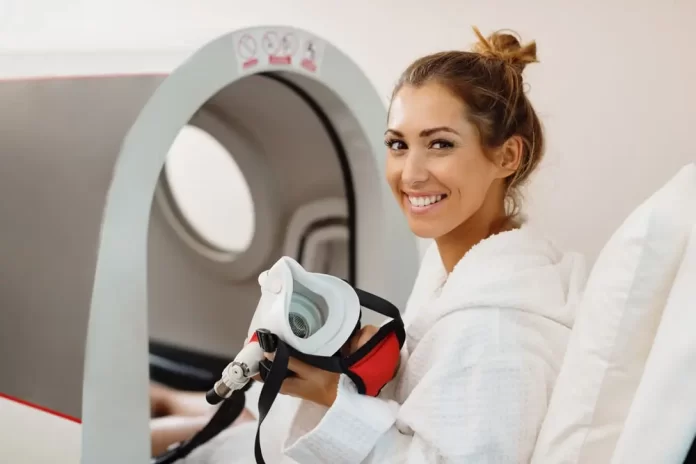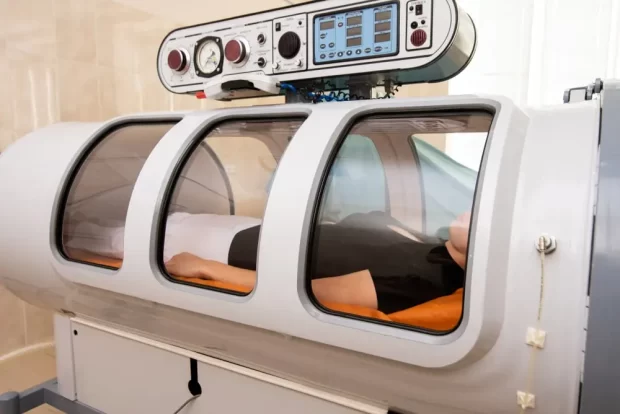
From athletes to burn victims, the hyperbaric chamber has emerged as a beneficial medical tool. For those unfamiliar with the term, you might wonder: what is a hyperbaric chamber? Here, we delve into the science and advantages of the hyperbaric oxygen chamber and address the typical questions surrounding its uses and effects.
What is a Hyperbaric Chamber?
A hyperbaric chamber is a medical device where individuals can breathe in pure oxygen at greater than normal atmospheric pressures. Imagine being in a room or capsule filled with high concentrations of oxygen – that’s essentially what it feels like. This heightened pressure environment allows the lungs to absorb more oxygen than they would at normal atmospheric pressure.
Types of Hyperbaric Chambers
There are primarily two types: monoplace, designed for one person, and multiplace which can accommodate multiple patients.
Monoplace Hyperbaric Chambers
- Capacity: Monoplace chambers are designed to treat one patient at a time. The patient typically lies down on a stretcher which slides into a clear plastic tube.
- Construction and Materials: These chambers are usually made of clear acrylic, allowing the patient to see outside, which can help reduce feelings of claustrophobia.
- Oxygen Delivery: In a monoplace chamber, the entire chamber is pressurized with 100% pure oxygen. This means the patient is breathing the ambient chamber air without the need for a mask or hood.
- Application: Monoplace chambers are common in both hospitals and private clinics. Their single-patient design allows for personalized therapy, but they might not be the best choice for patients who need medical assistance during the session.
Multiplace Hyperbaric Chambers
- Capacity: As the name suggests, multiplace chambers can treat multiple patients simultaneously, often ranging from two to over a dozen patients at a time.
- Construction and Materials: These chambers are typically larger, made of stronger materials such as metal, and look more like a room. Inside, they have seats or beds for patients and might also accommodate medical staff who can assist or monitor patients during therapy.
- Oxygen Delivery: Instead of filling the entire chamber with oxygen, patients in multiplace chambers breathe oxygen through individual masks or hoods. The chamber itself is pressurized with normal air while the oxygen is delivered directly to the patient.
- Application: Multiplace chambers are often found in larger medical facilities and hospitals. Their capacity to treat multiple patients and accommodate medical staff makes them suitable for more complex cases or situations where continuous patient monitoring is crucial.
Choosing between monoplace and multiplace chambers largely depends on the specific needs of the patient and the facility’s capabilities. While monoplace chambers offer a more individualized experience, multiplace chambers provide the versatility of treating multiple patients simultaneously and the possibility for medical interventions during the therapy. Both types have proven effective in delivering hyperbaric oxygen therapy and are instrumental in addressing a range of medical conditions.
The Science Behind Hyperbaric Oxygen Chamber

The primary objective of the hyperbaric oxygen chamber is to increase the amount of oxygen your blood can carry. Under these conditions, your lungs can collect up to three times more oxygen than they would be breathing in the normal air. This enriched blood then circulates throughout your body, promoting faster healing, combating bacteria, and stimulating the release of growth factors and stem cells, which further aid in recovery.
Hyperbaric Chamber Benefits
The benefits of using a hyperbaric chamber are numerous. Here are some of the most notable advantages:
- Wound Healing: Particularly useful for non-healing wounds like diabetic foot ulcers.
- Burn Recovery: The hyperbaric chamber for burns has been instrumental in speeding up the healing process and reducing the risk of infections.
- Decompression Sickness: Commonly seen in divers, hyperbaric therapy can treat bubbles of air that form inside your body.
- Carbon Monoxide Poisoning: The therapy is beneficial in clearing the poison from the body.
What Does a Hyperbaric Chamber Do?
In essence, hyperbaric chamber therapy increases the oxygen supply in the body. This surge in oxygen levels aids in creating new blood vessels, reduces swelling, prevents tissue death, and aids in fighting certain kinds of infections.
Hyperbaric Chamber Therapy Cost
The cost for using a hyperbaric chamber varies depending on the location, purpose (medical treatment vs. athletic recovery), and the type of chamber. Medical treatments may be covered by insurance in certain circumstances. Alternatively, the rise of at-home hyperbaric chambers has made the therapy more accessible, but individuals should be cautious and ensure proper usage.
Hyperbaric Chamber Pressure
The hyperbaric chamber pressure typically ranges between 1.5 to 3 times the average atmospheric pressure. The specific pressure and duration of treatment depend on the medical condition being addressed.
Safety and Precautions
Preparing for a Session
Patients are generally advised to wear comfortable clothing and avoid bringing any personal items inside, especially flammable or electronic ones.
Side Effects and Considerations
Though generally safe, there are potential side effects including ear pain, sinus congestion, and in rare cases, oxygen toxicity.
In Conclusion
While the hyperbaric chamber has proven its merit in several medical scenarios, always consult with a healthcare professional before considering treatment. As research continues, the scope of hyperbaric therapy’s benefits will only grow, offering hope and healing to many.
FAQs Related to Hyperbaric Chamber Therapy
The primary purpose is to increase the amount of oxygen in the blood, promoting healing and combatting bacteria.
While convenient, always ensure you’re using it correctly and under proper guidance.
Sessions can range from 30 minutes to two hours, depending on the condition being treated.
Beyond the mentioned conditions like non-healing wounds and decompression sickness, it can also be used for serious infections, bubbles of air in your blood vessels, and radiation injury.
Possible side effects include ear pain, temporary nearsightedness, sinus pain, and in rare cases, lung collapse or seizures due to oxygen toxicity.
The pressure inside the chamber is about two to three times greater than the normal pressure in the atmosphere, enabling the lungs to gather more oxygen.
The therapy itself isn’t painful. However, some patients report a popping sensation in their ears similar to what you might experience in an airplane.
While it is beneficial for many, it’s not suitable for everyone. People with certain medical conditions, including lung diseases or some types of infections, should avoid it. Always consult with a healthcare professional.
The number of treatments varies depending on the condition. Some acute problems, like carbon monoxide poisoning, might need only 3 treatments, while chronic conditions can require more than 20 sessions.
Generally, patients are advised to wear a hospital gown and avoid taking in any personal items, especially electronic devices, to ensure safety.
Yes. Hard chambers are made of rigid materials and can accommodate more than one person. Soft chambers are inflatable and typically designed for a single person. The pressure achieved in soft chambers is less than that in hard chambers.
Yes, in most cases, a prescription from a doctor is required to undergo this therapy.
